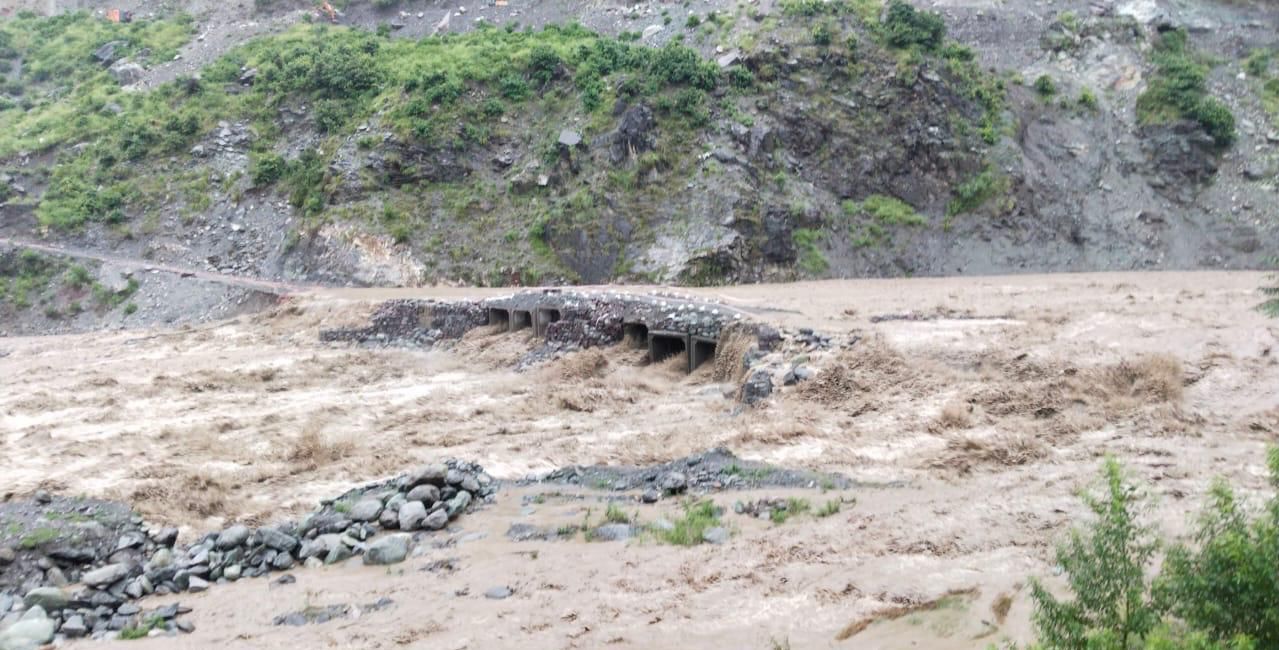 Early Times Report Early Times Report
BUDHAL, Sept 23: Budhal - Mahore - Gul (BMG) road is a strategic important road for the movement of troops and supply of logistics across the important regions of Pir Panjal ranges. On the other hand, the local populace also depends heavily on this road for their daily movement to connected districts of Rajouri & Reasi. It is the primary route that connects remote villages to Sub Divisions and District Headquarters, making it essential for the transport of goods, services, and emergency response. This dual role makes the BMG Road a crucial and irreplaceable link in the region's infrastructure.
On 28 August 2025 due to excessive rainfall in the Pir Panjal region and flash floods, Badora diversion on this road was severely impacted and washed out completely. This event had widespread consequences, affecting 15 villages and hindering inter-district and intra-district connectivity, specifically between the Reasi, Rajouri, and Ramban districts. The diversion, which was a vital transport link in this rugged and remote region, was blocked, disrupting the flow of goods, services, and people across these areas.
In addition to the immediate damage caused by the floodwaters, the situation was worsened by multiple landslides that occurred along the BMG road, which connects the affected areas. These landslides prevented the machinery and resources necessary for the restoration of the diversion from reaching the site. Given the terrain and the extreme weather conditions, initial progress in assessing and repairing the damage was halted, leading to delays in the restoration works.
Despite these significant obstacles, team of 110 RCC under 31 Border Roads Task Force (BRTF)/ Project Sampark, took the challenge head-on. Clearing of the landslides in order to access the site was started but it wasn't until 08 September 2025 that the necessary resources finally reached the Badora site. By that time, however, the water flow from the Badora Nallah (a river that flows near the diversion) had increased significantly, further complicating efforts to restore the infrastructure. The heavy flow of water made it impossible to start the restoration work immediately.
Faced with these compounded challenges, the team decided to approach the situation using a combination of innovative engineering techniques and strategic planning. The first major step was the diversion of water also called river training work to the opposite side of the river to allow for safe access to the affected area. This was achieved by constructing a temporary water channel using River Bed Material (RBM), which diverted the flow of the river and reduced the pressure on the damaged infrastructure. The successful creation of this temporary channel enabled the restoration work to proceed without the constant threat of water.
With the water flow under control, work on restoring the diversion began on 12 September 2025. The restoration team worked relentlessly, day and night, to ensure the diversion was rebuilt quickly. The restoration process required the use of advanced construction machinery and precast culverts, which were deployed to rebuild the damaged sections of the diversion. In addition to repairing the physical structure of the diversion, extensive river training works were also carried out to stabilize the surrounding area and prevent future damage from similar flooding events. After ten days of continuous hard work, zeal and remarkable dedication, the Badora diversion was successfully restored by 20 September 2025. The restoration was completed to maintain vital road and infrastructure connectivity. |
